Understanding and utilizing the Intersect Operator in Excel can significantly elevate your data management and analysis capabilities. This powerful feature allows users to pinpoint and manipulate the overlapping areas of ranges, offering a refined approach to handling complex datasets. Whether you’re a financial analyst sifting through extensive data, a marketer analyzing consumer trends, or an academic researcher collating experimental data, mastering the Intersect Operator can streamline your workflow and enhance precision. This guide aims to demystify the concept of the Intersect Operator and provide clear, actionable steps on how to effectively employ it in your Excel endeavors, ensuring your analyses are both efficient and accurate.
This Tutorial Covers:
- Intersect Operator in Excel
- Intersection of a Single Row and Column
- Intersection of a Multiple Rows and Columns
- Intersection of Named Ranges
- A Real-World Excel Intersect Operator Example
1. Intersect Operator in Excel
The intersect operator in Excel is used to determine where two ranges meet. It is represented by the space character (“”).
The region where two ranges overlap or collide is referred to as the intersection of the two ranges.
Excel Intersect Function can be used to determine:
- The intersection of a single row and column.
- The intersection of multiple rows and columns.
- The intersection of Named Ranges.
2. Intersection of a Single Row and Column
Consider the data collection depicted below:
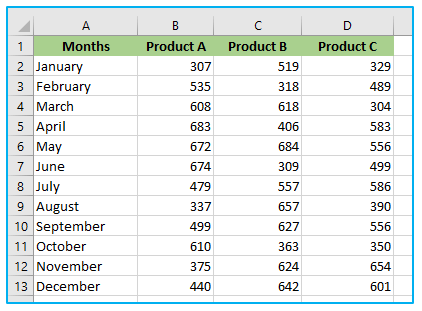
If you use =C2:C13 B6:D6 right now The intersect operator in Excel will yield 684 (the value in column C6), which represents the intersection of these two ranges [note that there is only one space between the ranges].
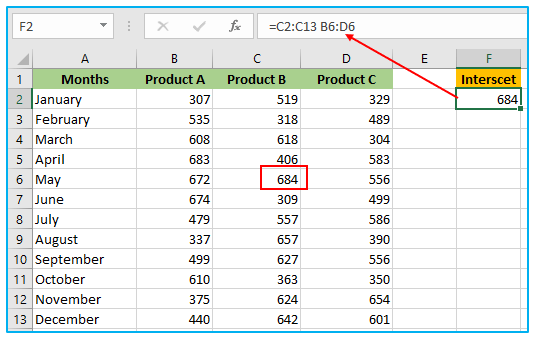
3. Intersection of a Multiple Rows and Columns
The intersection in Excel of ranges that cover more than one row or column can be found using the same method. You can obtain the intersection of Products 1 and 2 in June using the same data collection as above.
The equation for doing that is as follows:
=B2:C13 B7:D7
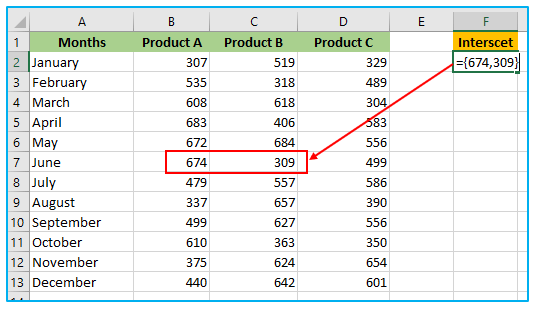
When you select the formula and press F9, the result will appear as “={674,309,}” despite the fact that the formula’s result would normally indicate a Value error. The intersection numbers are returned as an array by this formula. This can be incorporated into formulas like SUM or MAX to determine the intersection numbers’ sum (to get the maximum of the intersection values).
4. Intersection of Named Ranges
Using Excel’s Intersect Operator, you can also locate the intersection using named ranged cells intersection.
Here is an illustration where I have labeled the numbers for Product A and B as PrdtA and PrdtB, month August as Aug.
Now you can use the formula =PrdtA Aug to determine where these two ranges meet.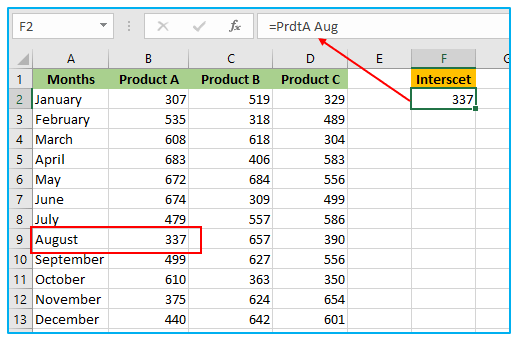
5. A Real-World Excel Intersect Operator Example
This is an instance where the technique might be useful. I have statistics on each employee’s monthly sales for 2022.
In order to extract the sales that the Employee made during that month, I have also constructed a drop-down list with the Employee Name and Month Name in separate cells.
How to accomplish this:
Step 1: To create named ranges, select the full data set (A3:M15) and press Control + Shift + F3. (Alternatively, you can do it by selecting Formula -> Defined Names -> Create from Selection.) A dialogue window labeled “Create Names from Selection” will then appear.
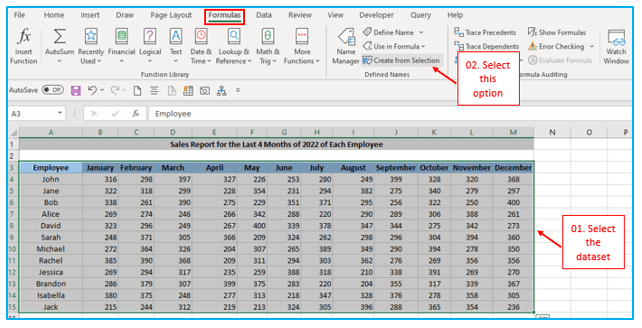
Step 2: Click OK after choosing “Top Row” and “Left Column.”
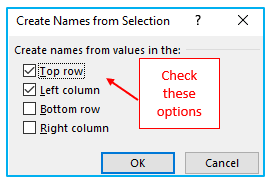
By doing this, named groups will be created for every Employee Name and every Month.
Step 3: Create a drop-down list for each Employee Name in column A18 now. Likewise, go to cell B18 and set up a drop-down menu for each month. Use the following formula in cell C18: =INDIRECT(A18) INDIRECT(B18)
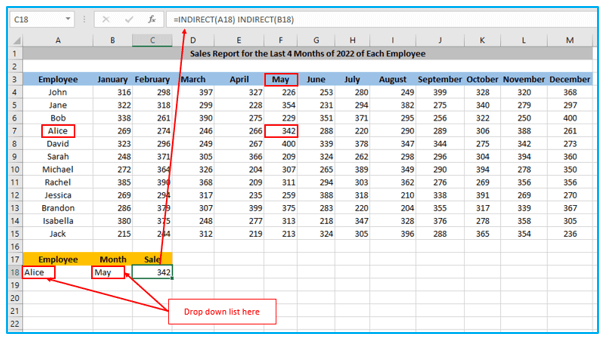
How does it work?
There is a blank area between the two INDIRECT formulas, as you can see.
The space between them acts as an intersect operator and returns the intersecting value. The INDIRECT function returns the range for the specified ranges, Employee, and the Month.
For ready-to-use Dashboard Templates:
